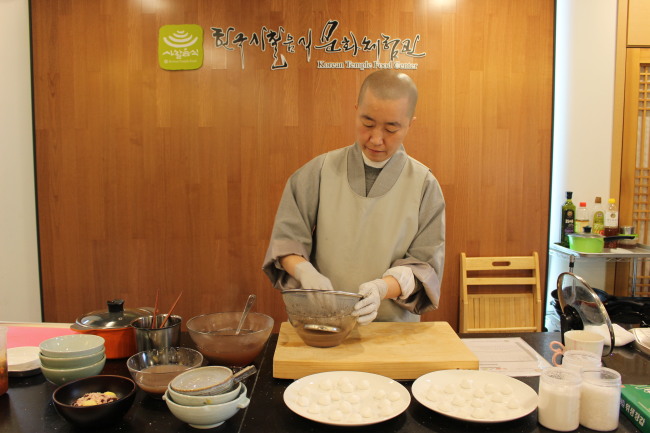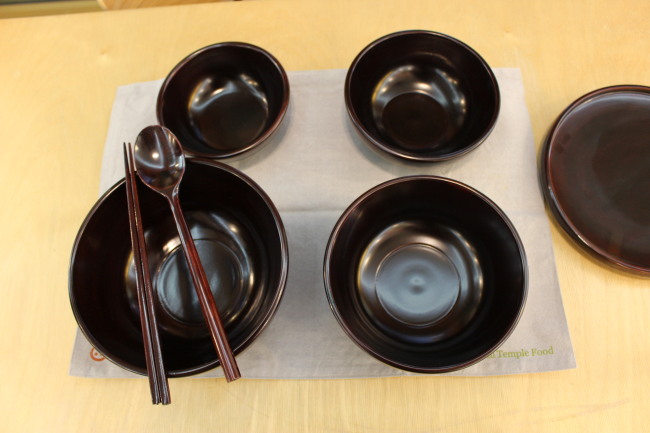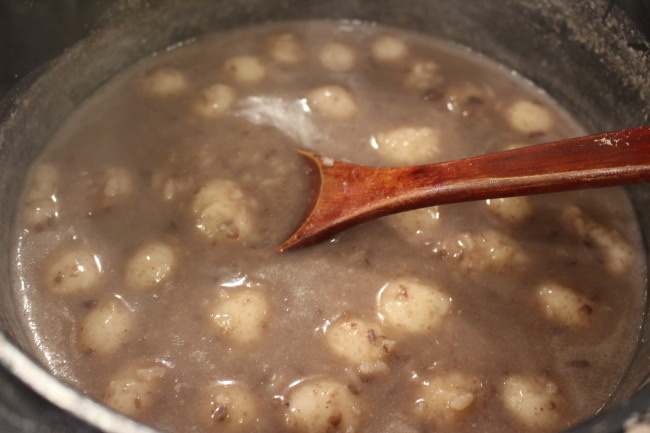[Weekender] Reflecting gratitude towards life as you eat: Temple Food
By Jo He-rimPublished : Nov. 29, 2018 - 16:55
You are what you eat, or so they say. For Buddhist practitioners in Korea, this idea develops further, and eating becomes part of spiritual practice.
The dietary culture of Korean Buddhism is not much different from the common Korean cuisine. But its core principles on healthy and humble diet is getting welcomed by nonreligious public, as an independent diet culture.
The dietary culture of Korean Buddhism is not much different from the common Korean cuisine. But its core principles on healthy and humble diet is getting welcomed by nonreligious public, as an independent diet culture.

In the temple, food is only a means with which Buddhist monks and nuns train for enlightenment. They take only the amount needed for physical sustenance, and every effort made for the mean and the ingredients the nature provides are appreciated, explained Buddhist nun Hyungmin at Korean Temple Food Center.
One distinctive characteristic of the temple diet is that meat is not used, although dairy products are. Eating meat is an action that “extinguishes the seeds of compassion” and goes against the Buddhist doctrine to embrace all living beings as oneself.
Temple food also does not use five “pungent” vegetables -- onions, garlic, chives, green onions and leeks -- called “oshinchae” in Korean, as they are believed to carry elements which can hinder monks and nuns from spiritual practices.
“The five vegetables contain strong spicy elements that brings out anger and carnal desires. These elements can cause distractions for monks and nuns in their meditations,” Hyungmin explained.
The smell of the oshinchae may be distracting for Buddhist practitioners in the communal living environment in temples, she added.
As one may know, the five vegetables are widely used in Korean dishes. In temples, however, other ingredients, such as pepper, ginger and herbs are used. The famous Korean fermented lettuce, Kimchi, also has an authentic taste in temples, as it is made without using garlic, one of the oshinchae, and without any fish products.

The monks and nuns also have special eating etiquette called, “barugongyang” which is a formal monastic meal in which they eat from “Baru,” a set of wooden bowls. The Baru consists of four bowls varying in sizes for rice, soup, side dishes and water, which is used to cleanse the baru at the end of the meal.
The most important part of the dinner is that they do not take more than what they need, and do not leave any leftover food in their bowls.
“It is only for sustaining your body, for the bigger purpose of practice. And the food should not be desired, nor should be left out,” Hyungmin said.
This dietary tradition however, is largely limited to Korean Buddhism. Other Buddhist orders outside Korea do not hold the same dietary rules. The sutra describes how practitioners devoted life to spiritual attainment and replied on people’s donations for food intake, and this kind of tradition remains and developed into different diet cultures.
While a growing number of people are becoming conscious of what they eat, the unique and healthy temple food is grabbing their attention.
In Korean Temple Food Center located near Anguk Station in central Seoul, more than 10,000 people came to take temple food cooking courses last year.

“I am not a believer. But as I live alone, I wanted to make healthy meals for myself and chose temple food, as its principles are unique. The courses are also affordable,” Park Jung-min, 29, told The Korea Herald at the cooking class last Saturday.
When the center first opened in 2015, the idea of temple food was not so friendly to the public. With some advertising efforts, the number of visitors jumped. In July, there were 1,100 visitors in the month and 300 of them were foreigners, Hyungmin explained.
At the Korean Temple Food Center, one-day cooking classes are given by Buddhist monks and nuns, with a 10,000 won ($7) participation fee. The time table of the classes and registration is open in its website.
“They all come with different purposes and different religions. But food speaks the same language, and the values carried in the temple dietary culture shows what is important in life,” Hyungmin said.
By Jo He-rim (herim@heraldcorp.com)








![[KH Explains] How should Korea adjust its trade defenses against Chinese EVs?](http://res.heraldm.com/phpwas/restmb_idxmake.php?idx=644&simg=/content/image/2024/04/15/20240415050562_0.jpg&u=20240415144419)











![[Today’s K-pop] Stray Kids to return soon: report](http://res.heraldm.com/phpwas/restmb_idxmake.php?idx=642&simg=/content/image/2024/04/16/20240416050713_0.jpg&u=)